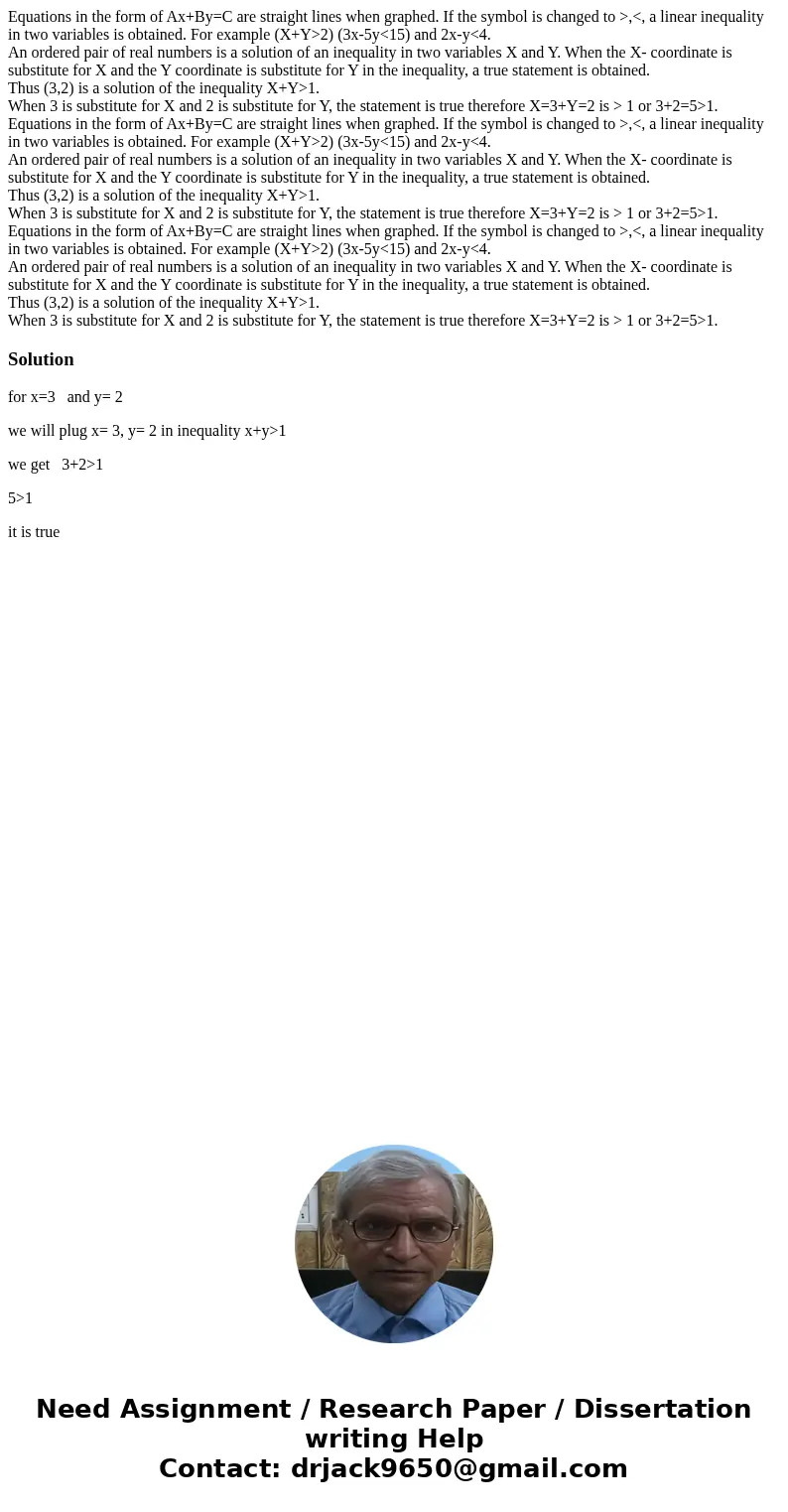Equations in the form of AxByC are straight lines when graph
Equations in the form of Ax+By=C are straight lines when graphed. If the symbol is changed to >,<, a linear inequality in two variables is obtained. For example (X+Y>2) (3x-5y<15) and 2x-y<4.
An ordered pair of real numbers is a solution of an inequality in two variables X and Y. When the X- coordinate is substitute for X and the Y coordinate is substitute for Y in the inequality, a true statement is obtained.
Thus (3,2) is a solution of the inequality X+Y>1.
When 3 is substitute for X and 2 is substitute for Y, the statement is true therefore X=3+Y=2 is > 1 or 3+2=5>1.
Equations in the form of Ax+By=C are straight lines when graphed. If the symbol is changed to >,<, a linear inequality in two variables is obtained. For example (X+Y>2) (3x-5y<15) and 2x-y<4.
An ordered pair of real numbers is a solution of an inequality in two variables X and Y. When the X- coordinate is substitute for X and the Y coordinate is substitute for Y in the inequality, a true statement is obtained.
Thus (3,2) is a solution of the inequality X+Y>1.
When 3 is substitute for X and 2 is substitute for Y, the statement is true therefore X=3+Y=2 is > 1 or 3+2=5>1.
Equations in the form of Ax+By=C are straight lines when graphed. If the symbol is changed to >,<, a linear inequality in two variables is obtained. For example (X+Y>2) (3x-5y<15) and 2x-y<4.
An ordered pair of real numbers is a solution of an inequality in two variables X and Y. When the X- coordinate is substitute for X and the Y coordinate is substitute for Y in the inequality, a true statement is obtained.
Thus (3,2) is a solution of the inequality X+Y>1.
When 3 is substitute for X and 2 is substitute for Y, the statement is true therefore X=3+Y=2 is > 1 or 3+2=5>1.
Solution
for x=3 and y= 2
we will plug x= 3, y= 2 in inequality x+y>1
we get 3+2>1
5>1
it is true

 Homework Sourse
Homework Sourse